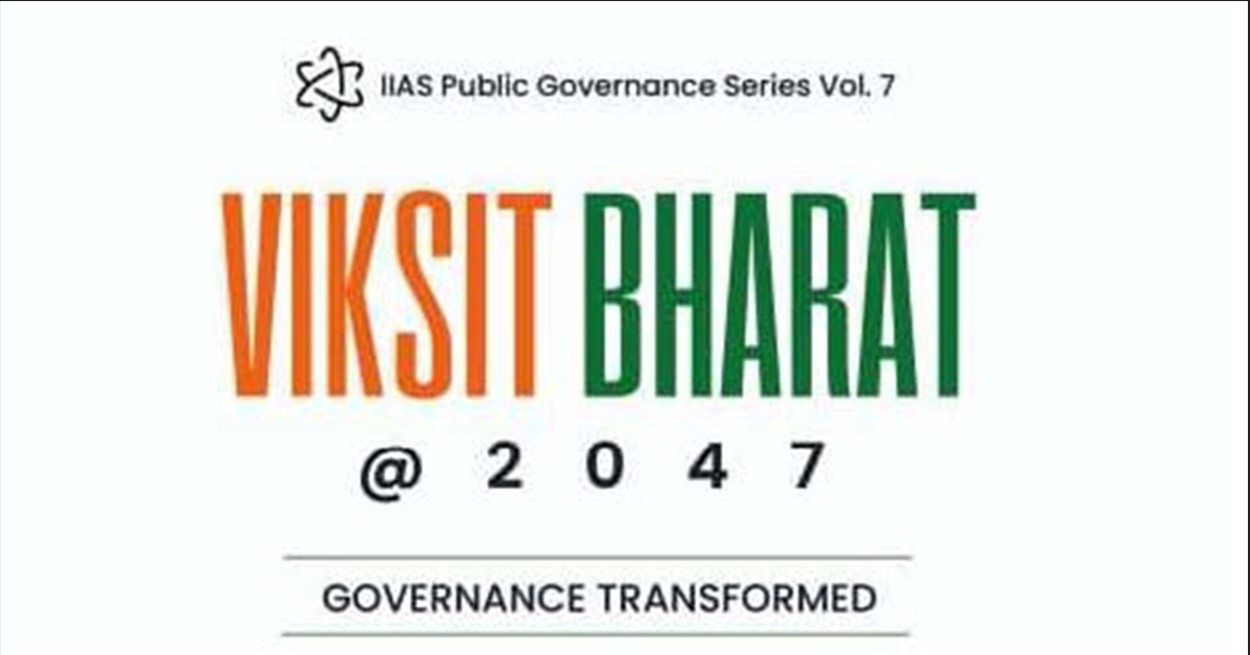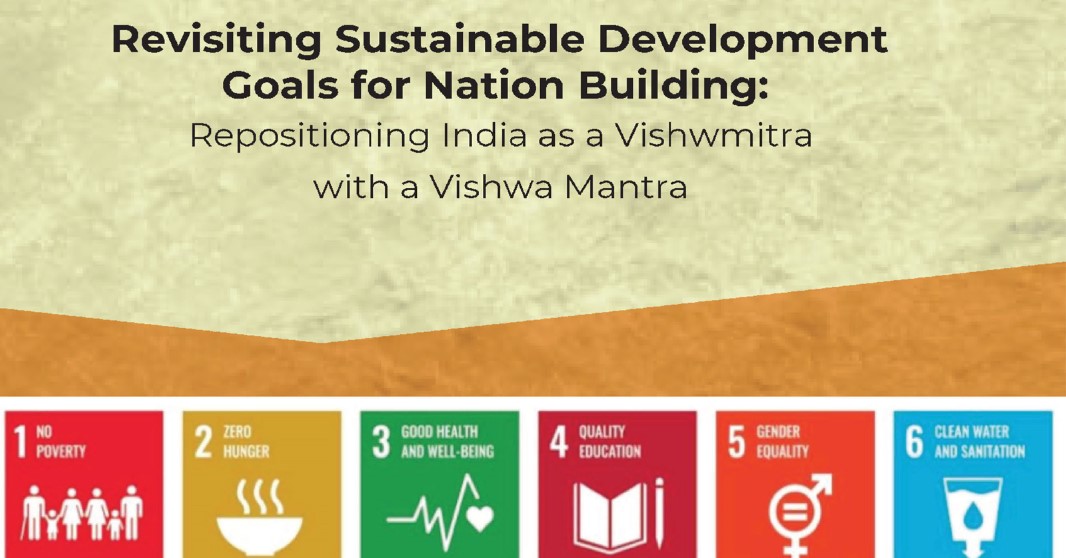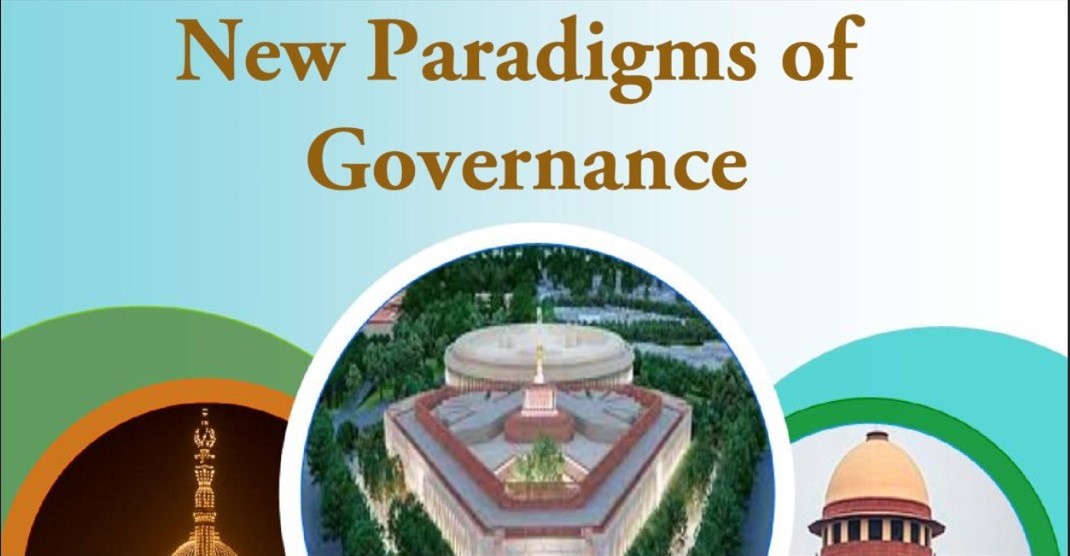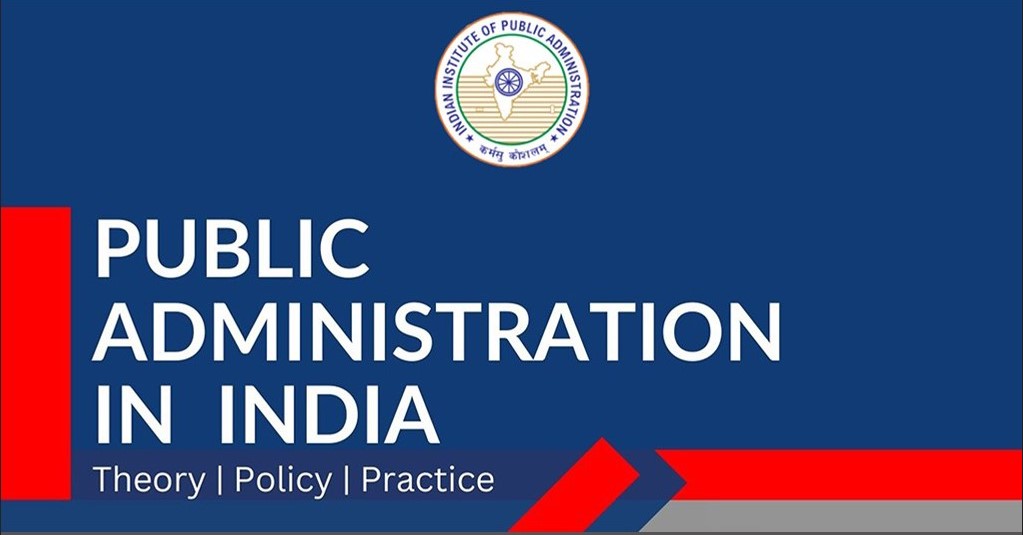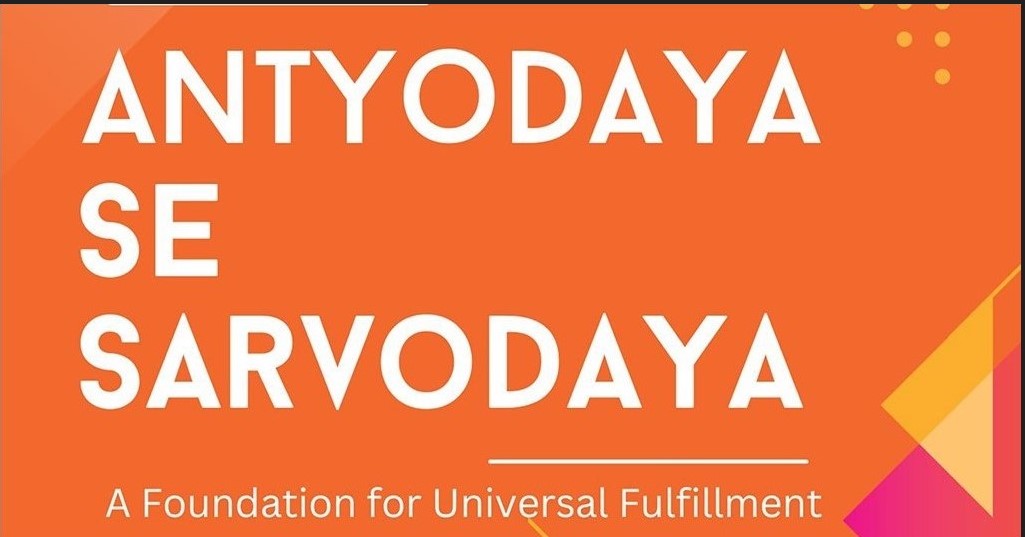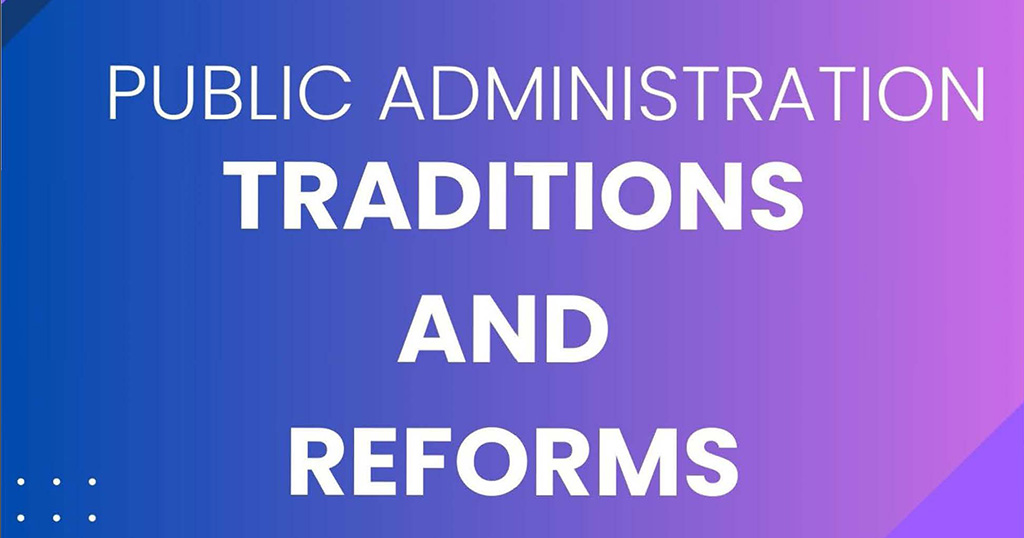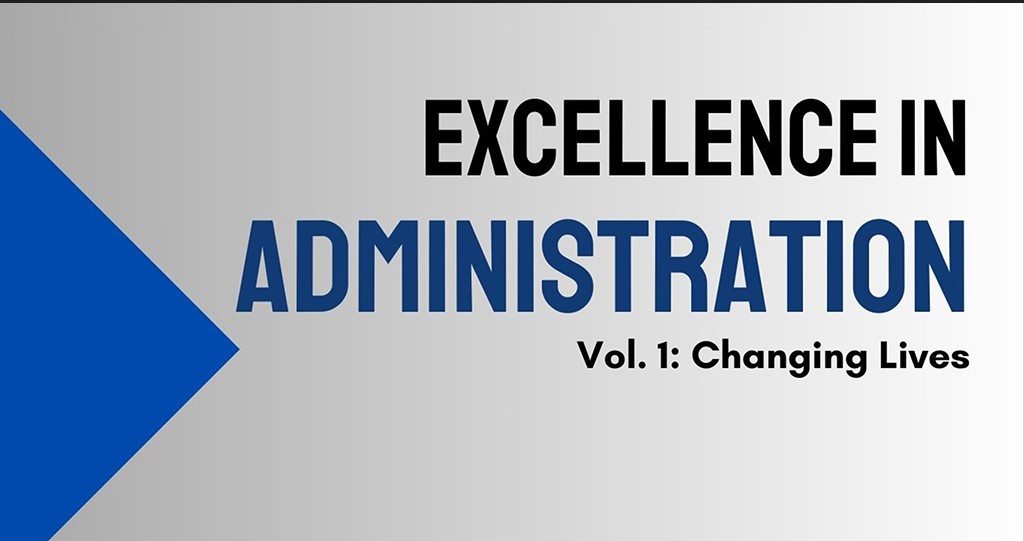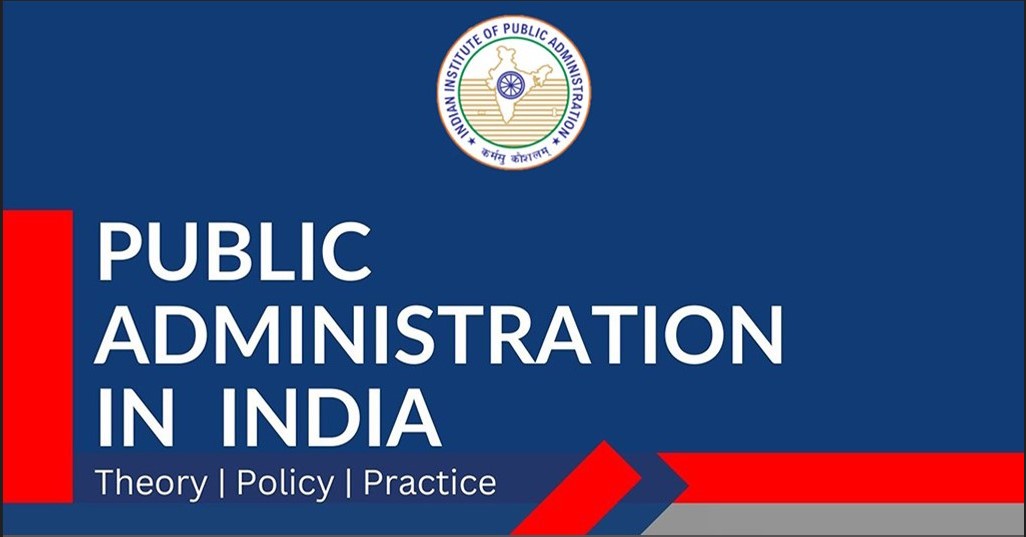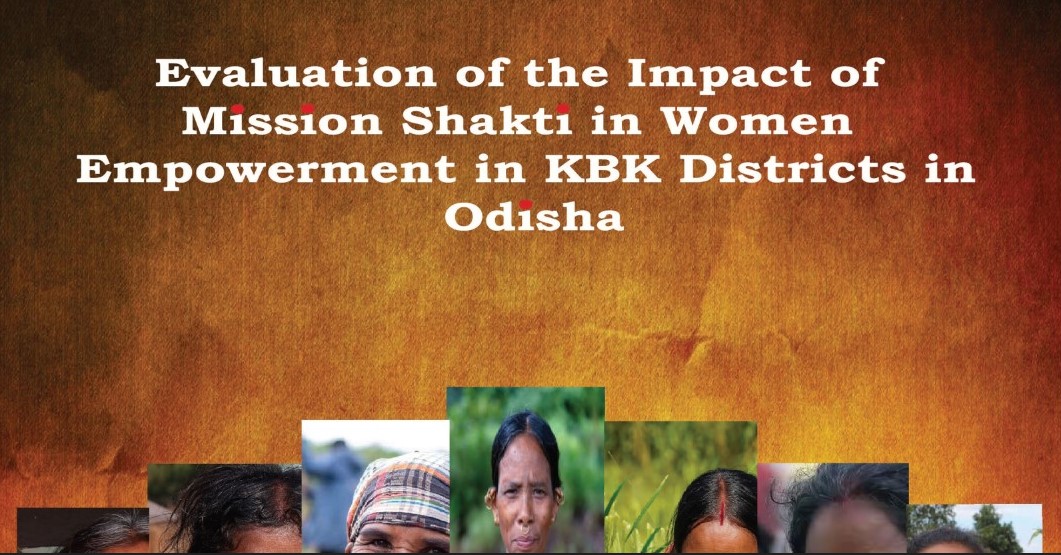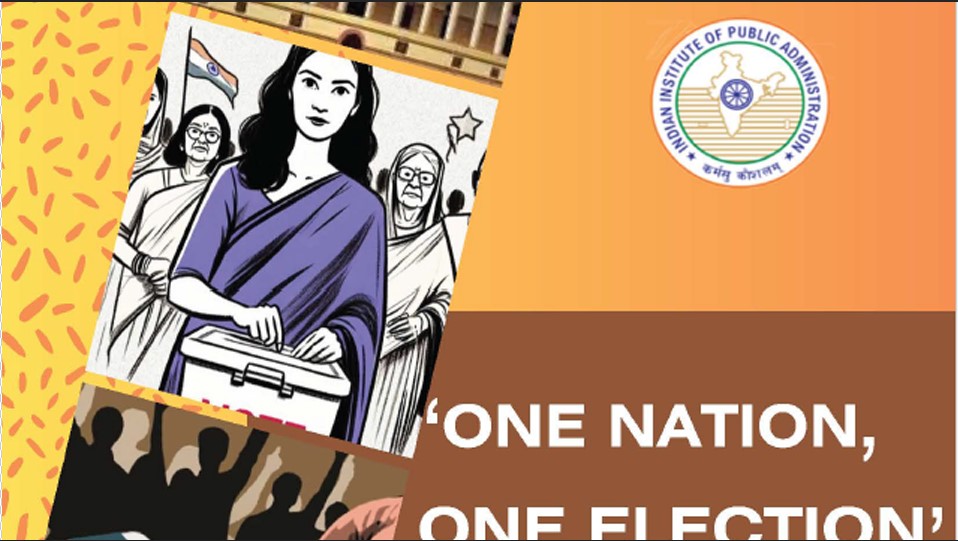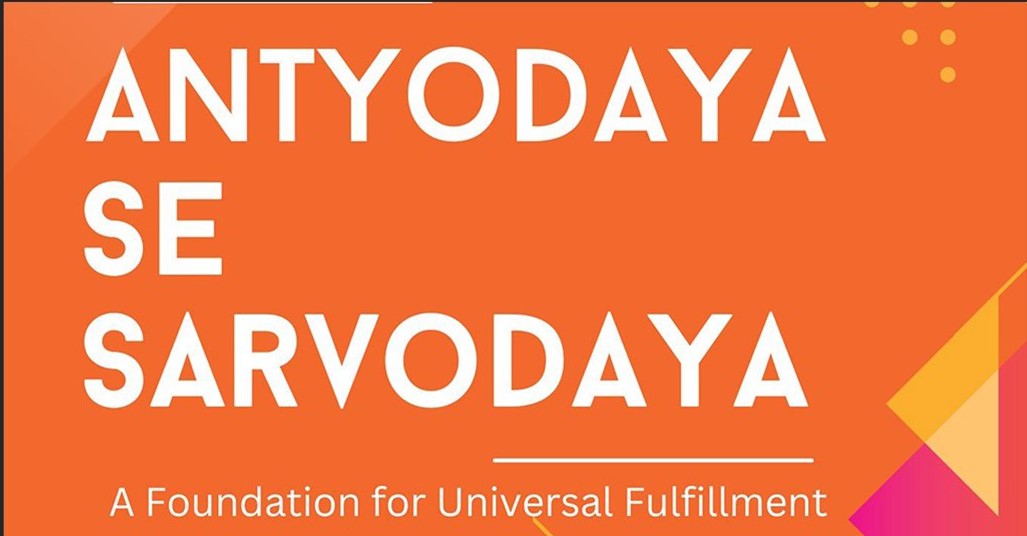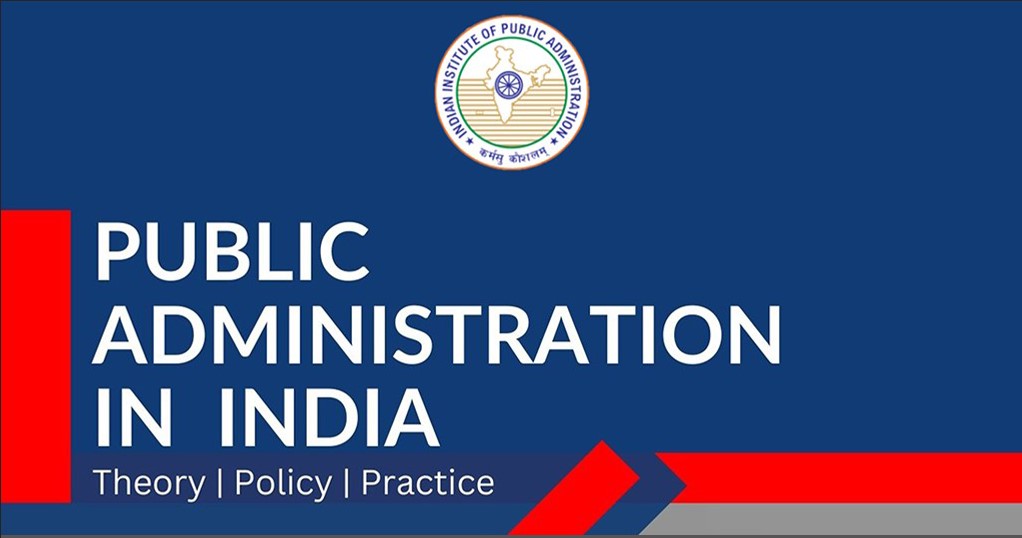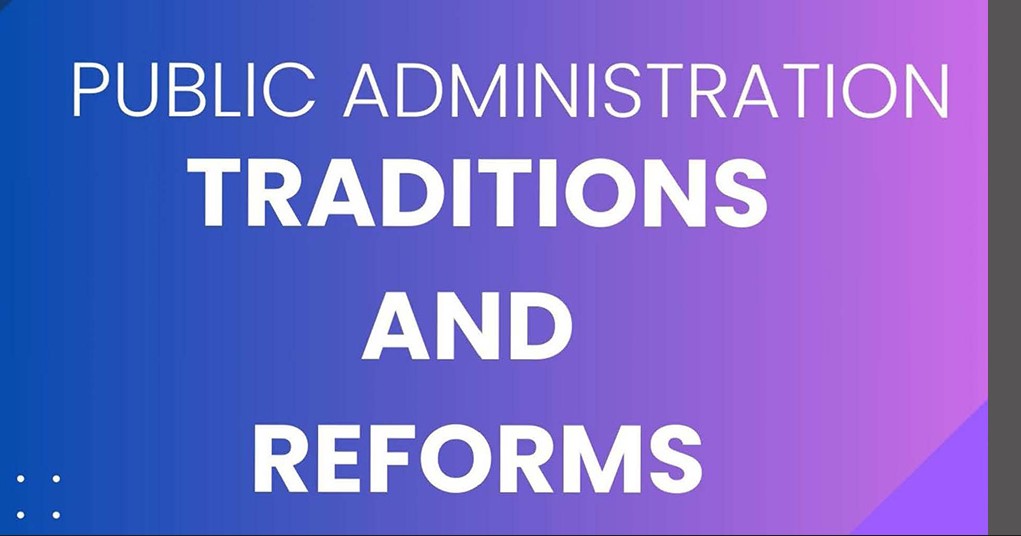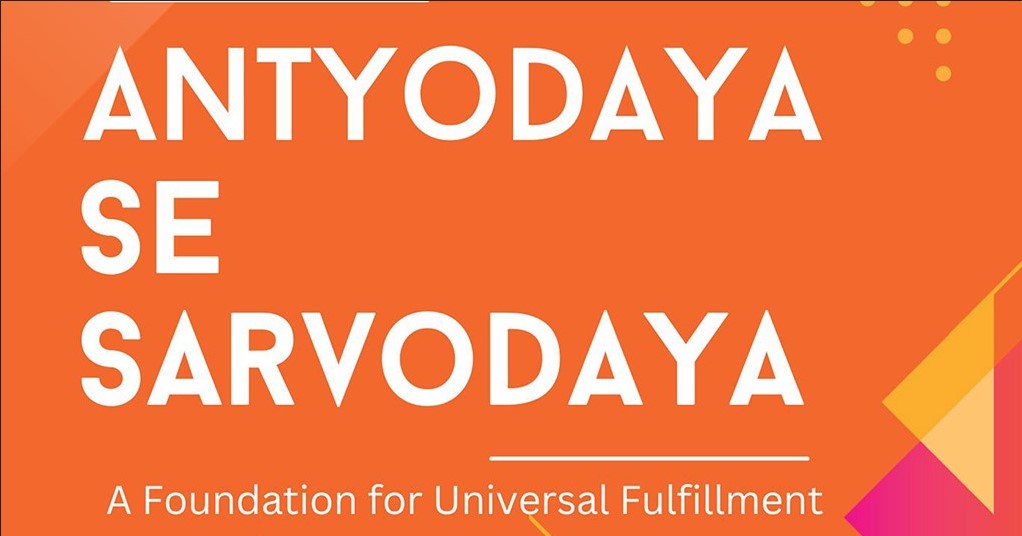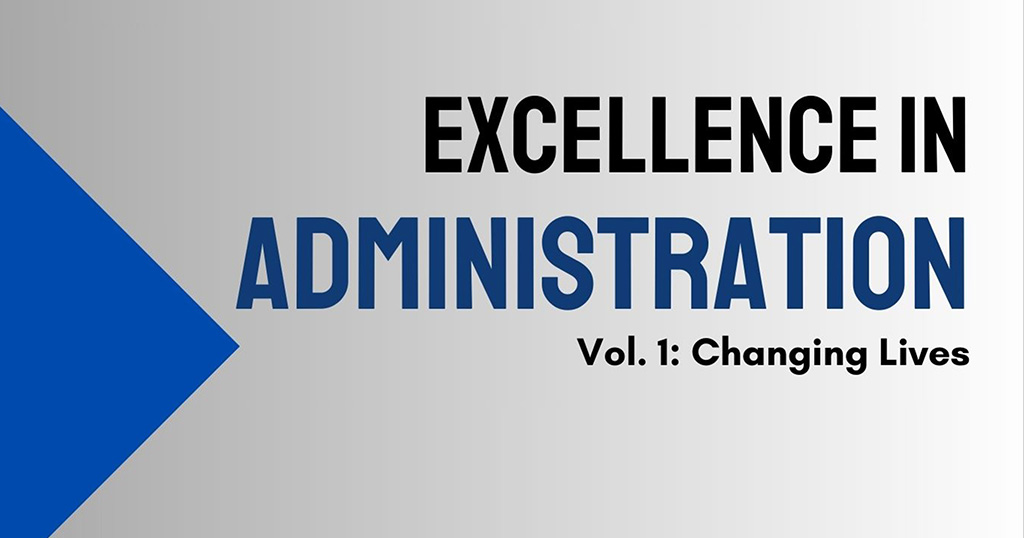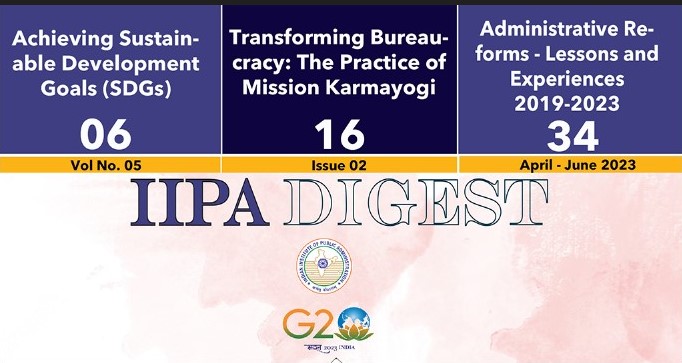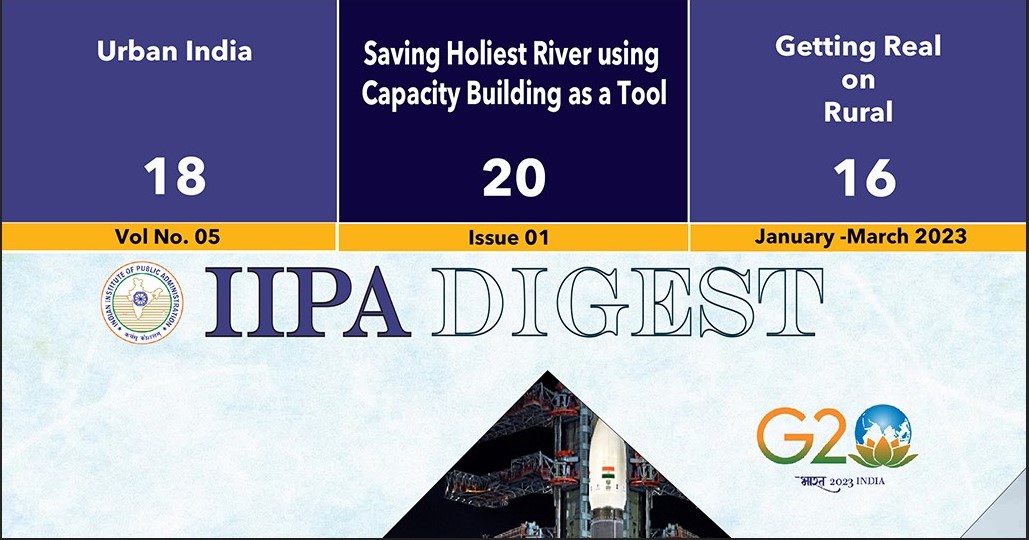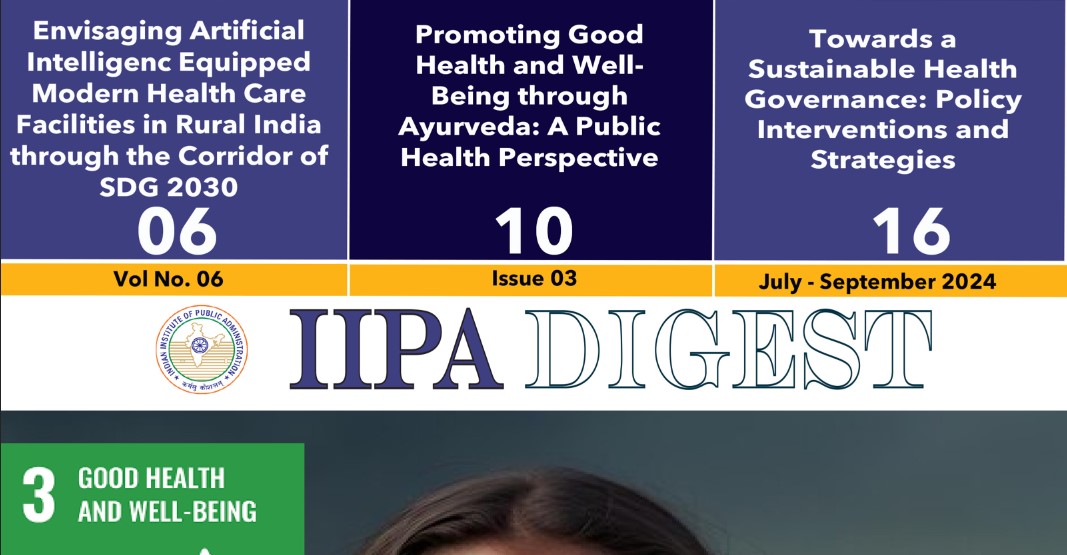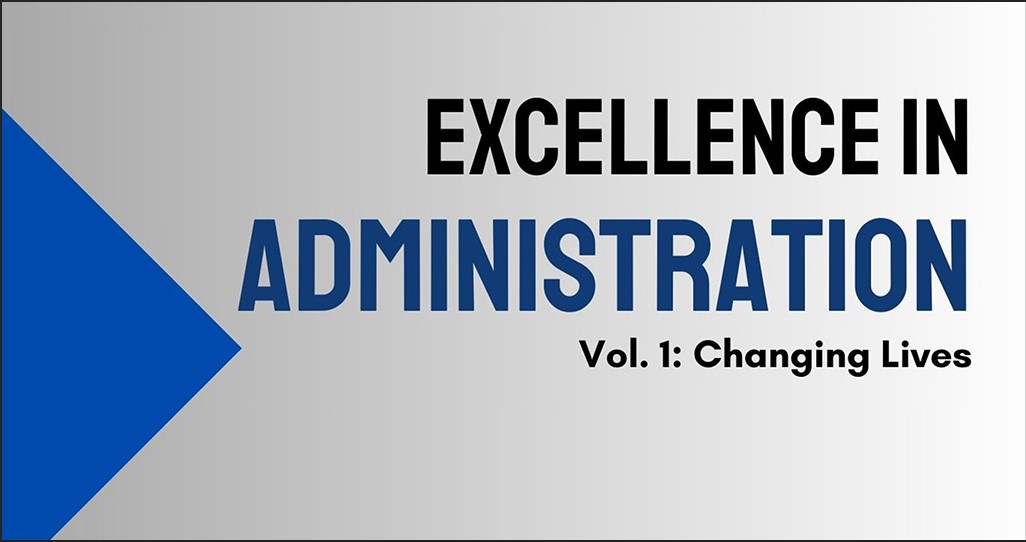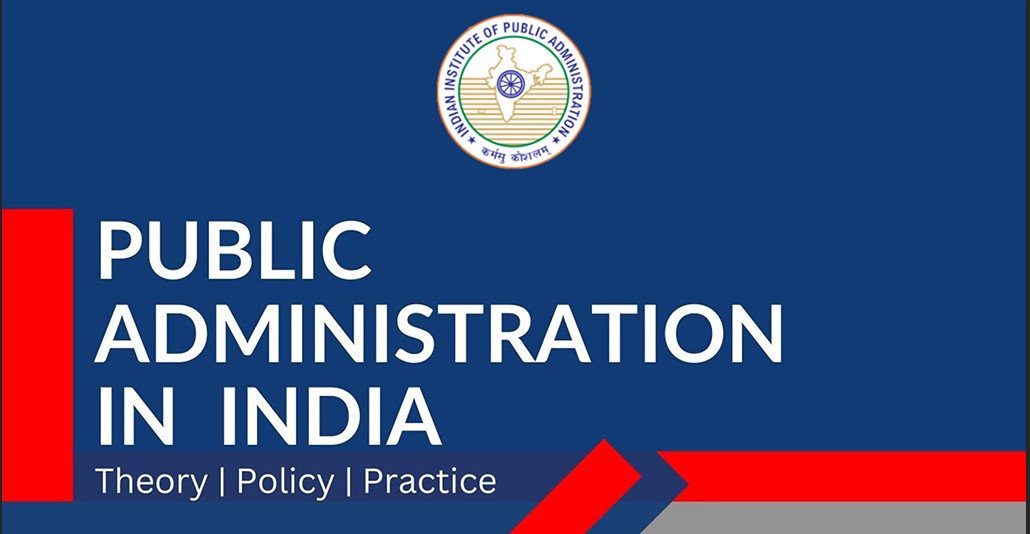Evolution of Indian Administration and Philosophical & Constitutional framework of Government
Abstract
The evolution of Indian administration reflects a historical continuum shaped by civilizational values and transformative changes. Spanning the Mauryan, Mughal, and British eras, each phase contributed distinct institutional structures and governance philosophies. Kautilya’s Arthashastra laid early foundations for statecraft, emphasizing centralized authority, fiscal management, and welfare, which the Mauryan Empire exemplified. The Mughal administration introduced decentralized governance through systems like mansabdari and jagirdari, blending Persian and Indian traditions. British colonial rule imposed a rigid bureaucratic model centered on control, creating enduring institutions like the Indian Civil Services and district administration. After independence, India pursued the Indianization of public services and revival of local self-governance, embedding democratic and indigenous values into administration. Today, Indian administration is anchored in constitutional principles such as justice, liberty, equality, and fraternity, while continuing to balance bureaucratic structures with democratic aspirations. This historical journey highlights the continuities and disruptions that have shaped contemporary public administration theory and practice in India.
13. Introduction
The evolution of Indian administration is a rich tapestry woven through centuries of political and cultural transformations, reflecting the changing dynamics of governance in the subcontinent. Ancient India witnessed the formulation of a structured and pragmatic administrative system under Kautilya's Arthashastra, which emphasized centralized authority, espionage, revenue collection, and welfare of the people. The medieval period, particularly under the Mughals, introduced a sophisticated administrative hierarchy with institutions like the Mansabdari system and an efficient revenue framework. The advent of British colonial rule marked a significant shift, as it brought about the codification of laws, establishment of civil services, and the centralization of authority, leaving a lasting legacy on Indian politics and administration. Post-independence, India embarked on a process of Indianization of public services to align governance with democratic and nationalistic ideals. Reforms in revenue administration, the empowerment of district collectors, and the strengthening of local self-government institutions, particularly through the 73rd and 74th Constitutional Amendments, have been crucial in deepening administrative decentralization and participatory governance in the country.
13.1 Evolution of Indian Administration During the Ancient Period
During the ancient period, the administrative structure in India was remarkably sophisticated, reflecting a well-organized and hierarchical system of governance. The Mauryan Empire, particularly under Emperor Ashoka, showcased a centralized bureaucratic system with a well-defined chain of command. The king stood at the apex of authority, supported by a council of ministers (Mantriparishad), provincial governors, and district officials (Sthanika and Gopa) who ensured efficient tax collection, law enforcement, and public welfare (Sharma, 1991). The Arthashastra, attributed to Kautilya (Chanakya), provides a detailed account of statecraft, administration, espionage, and economic policy, underscoring the emphasis on discipline, control, and surveillance in governance (Rangarajan, 1992). Moreover, inscriptions such as the Ashokan edicts reflect a commitment to moral governance (Dhamma) and welfare administration, highlighting public communication and social justice as state functions (Thapar, 2002). This structured administrative framework laid the foundation for governance practices in subsequent periods. Table 13.1 provides a comprehensive overview of the administrative structures and functions that characterized governance during the ancient period, highlighting the foundational elements of early public administration.
Table-13.1: Administrative Structures and Functions during Ancient Period
13.2 Kautilya’s Arthashastra
Kautilya’s Arthashastra is a profound theoretical work on the state and statecraft. Written in ancient India, it offers a comprehensive treatise on governance, administration, law, economy, diplomacy, and military strategy. It conceptualizes the state as comprising the king, ministers, territory, fort, treasury, army, and allies-collectively known as the Saptanga theory. Kautilya emphasizes the ruler’s duty to ensure the welfare and prosperity of the people through ethical and pragmatic governance. Though rooted in its time, Arthashastra remains relevant today for its insights into realpolitik, governance ethics, and public administration, making it a foundational work on statecraft. It attributed to Kautilya, presents a well-organized model of governance characterized by a highly centralized administration. The king was the supreme authority, wielding absolute power while being guided by a council of ministers to ensure effective decision-making. A key feature of this governance model was its systematic revenue system, where taxation was meticulously structured to fund state functions and maintain economic stability. Additionally, law and order were upheld through a structured judicial system designed to deliver justice and regulate societal conduct. Another crucial aspect was the use of espionage and intelligence, with an extensive secret service network playing a pivotal role in maintaining internal security and preventing threats to the state (Rangarajan, 1992). Kautilya’s administrative framework was highly structured, displaying characteristics that align with modern bureaucratic principles, making it a significant precursor to contemporary governance models (Roy, 2017). In Arthashastra, Kautilya presents the state as a welfare-oriented and ethically grounded institution, not merely a police or tax-collecting entity. While maintaining law and order (policing) and collecting revenue are essential functions, the state’s ultimate goal is the prosperity, protection, and well-being of its people. The ruler is seen as a guardian of dharma (justice) and economic welfare, responsible for public goods, social justice, and ethical governance. This holistic view aligns with modern ideas of a welfare state, emphasizing that governance must balance authority with compassion and development. Table 13.2 outlines the administrative structures and functions during the Kautilya (Mauryan) period, reflecting the sophisticated and centralized governance model advocated in the Arthashastra.
Table-13.2: Administrative Structures and Functions During Kautilya (Mauryan) Period
Kautilya’s vision of governance-centered on a ruler’s accountability, ethical conduct, and delivery of justice reflects the core principles of good governance today. In an era of democratic administration, these ideas translate into transparent institutions, responsible leadership, and citizen-centric policies. Kautilya’s focus on justice as the foundation of state legitimacy resonates with the modern need for equitable governance and rule of law. Thus, his principles offer timeless guidance for ethical and effective administration in India.
During the ancient period in India, public administration was not only practiced but also studied and codified as an academic discipline within broader frameworks of statecraft and governance. The most notable academic contribution to public administration came through the Arthashastra. This treatise systematically articulated administrative principles, the organization of government departments, roles and duties of officials, revenue administration, law enforcement, and foreign policy (Rangarajan, 1992). It laid the foundation for administrative theory in ancient India by providing a pragmatic and detailed model of governance. Education in administration was often imparted in Gurukulas and Takshashila University (Altekar, 1951). Administration was also influenced by Dharmashastras and Smritis, which outlined the moral and legal duties of rulers and officials, emphasizing justice, duty, and welfare as essential to good governance (Kane, 1968). Table 13.3 presents the books of Kautilya's Arthashastra that are directly related to public administration, highlighting the foundational principles, departmental structures, and governance mechanisms articulated in this ancient treatise.
Table-13.3: Books of Kautilya's Arthashastra Related to Public Administration
13.3 Mughal Administration
The Mughal Empire established a centralized and hierarchical administration that significantly influenced later governance models (Habib, 1999). At its core, the empire was governed by a system of centralized authority, where the emperor wielded supreme power, aided by a council of ministers (Wazirs) responsible for key state functions. A distinctive feature of Mughal administration was the Mansabdari System, which ranked officials (mansabdars) based on their military and administrative responsibilities, ensuring an organized bureaucratic structure. Revenue administration, particularly under Akbar, became highly methodical through the Zabt and Dahsala systems, where land measurement, productivity, and classification were used to assess taxes. This required trained officials capable of surveying land and maintaining meticulous records (Moosvi, 1987). The administrative framework extended to provincial and district governance, with the empire being divided into Subahs (provinces), each headed by a Subedar, and further subdivided into Sarkars (districts) and Parganas (local units) (Chandra, 2008). The Mughal administrative structure laid the foundation for many aspects of modern Indian bureaucracy, particularly in revenue collection and district governance, influencing governance models that followed (Majumdar, 2005). The Mughal administration was a unique blend of Indian and extra-Indian (mainly Persian and Central Asian) elements. From the Indian tradition, it adopted systems like land revenue collection (inspired by Sher Shah Suri), local governance practices, and the integration of Rajput chiefs into the administrative structure. From extra-Indian sources, it incorporated Persian as the official language, the mansabdari system (a Central Asian military-administrative structure), and a strong emphasis on imperial absolutism. This fusion created a centralized yet accommodative governance model, contributing to administrative stability and cultural synthesis in the Mughal Empire. Table 13.4 presents the administrative structures and functions during the Mughal period, illustrating the hierarchical and elaborate system of governance that evolved under imperial rule.
Table-13.4: Administrative Structures and Functions during the Mughal Period
During the Mughal period, India developed a highly centralized and sophisticated bureaucratic system of administration. Drawing on Persian-Islamic traditions and blending them with Indian practices, especially under Emperor Akbar, the Mughal administration emphasized both governance and scholarship. Abul Fazl’s Ain-i-Akbari served as a monumental record of administrative structures, revenue systems, official roles, and justice principles (Fazl, 1873). Education in public administration was imparted through madrasas, focusing on Persian, Islamic jurisprudence (Fiqh), logic, governance, and record-keeping. Future administrators, nobles, and scribes (Munshis) were trained academically and refined through practical experience at court (Rizvi, 1975). A robust system of documentation was maintained through daftars (departments), demonstrating an advanced approach to information management.
13.4 Legacy of British Rule in Politics and Administration
The British colonial period profoundly shaped India's political and administrative structures. They introduced a formal bureaucracy through the Indian Civil Service (ICS), laying the groundwork for a professional administration (Metcalf, 1994). Legal reforms included the Indian Penal Code (1860) and Criminal Procedure Code (1861), establishing a codified legal system (Banerjee, 2010). In revenue administration, systems like the Permanent Settlement (1793) and Ryotwari changed land relations significantly. The British also promoted local governance through the Local Self-Government Acts of 1882 and 1919 (Khilnani, 2003). Despite its exploitative aims, British rule created administrative, legal, and political institutions that continue to influence India’s governance (Bose & Jalal, 2017). Early administrative structures emerged, including the office of District Collector, the Judicial Department (with Warren Hastings' Judicial Plan of 1772), and the Military and Commercial Departments. Diplomatic relations were managed informally through a developing Political Department. The Regulating Act of 1773 and the formation of the Governor-General’s Council began formalizing executive governance, while Company servants evolved into a proto-civil service (Thakore, 1922).
The Regulating Act of 1773 and Pitt’s India Act of 1784 introduced "Double Government," with the East India Company managing commerce and the British Crown overseeing political matters via the Board of Control. This system centralized administration under the Governor-General and institutionalized departments like Revenue, Judicial, and Military. Key reforms included the Permanent Settlement (1793) and the Cornwallis Code (1793), which structured district administration, judicial hierarchies, and codified laws. Although complex and often conflict-ridden, this phase strengthened centralized British control over India, setting the stage for direct Crown rule. After 1858, power transferred directly to the British Crown, with the Viceroy and the Secretary of State for India at the helm. The ICS became the elite administrative body, while legislative councils gradually included limited Indian participation through reforms like the Indian Councils Acts (1861, 1892) and the Government of India Acts (1909, 1919, 1935). Key departments developed during this period: the Home Department, Finance Department, Public Works Department, Education Department, Police Department, Judicial Department (High Courts Act of 1861), Health and Sanitation, and the Railway and Telegraph Departments. The Political Department continued to manage princely state relations. This period saw the emergence of a centralized, hierarchical bureaucracy that would heavily influence independent India's governance systems. Table 5 depicts the administrative structures and functions during the British period, showcasing the colonial framework that significantly influenced the evolution of modern public administration in India (Joshi, 1937).
Table-13.5: Administrative Structures and Functions During British Period
During the British period in India, the academic study of public administration began to take shape under colonial educational reforms. The Charter Act of 1813 and Macaulay’s Minute on Indian Education (1835) led to the promotion of Western-style education, introducing English as the medium of instruction and European political thought into Indian universities. Indian students, particularly in institutions like the University of Calcutta, Madras, and Bombay, were exposed to subjects such as political science, law, and constitutional government, which laid the foundation for academic inquiry into administration and governance. The literature spanning the early 20th century offers a rich tapestry of insights into the evolution and complexities of public administration in India. The works mentioned provide invaluable insights into the evolution of public administration in India during the British colonial period, shaping modern governance frameworks.
Table-13.6: Classification of Indian Public Administration Literature during British Period
13.5 Indianization of Public Services
Macaulay’s ideas on the Indian Civil Service closely align with the elite theory of bureaucracy, and this influence persists in India today. Macaulay envisioned a highly educated, merit-based civil service drawn from the upper strata of society, believing that a small, intellectually superior elite could govern effectively. This created a hierarchical, top-down administrative structure, with limited grassroots connection. Even after independence, the civil services retained this elitist character, often criticized for being aloof, centralized, and resistant to change. While reforms have aimed at inclusivity and responsiveness, the legacy of an elite-driven bureaucracy still shapes public administration in India.
Table-7: Brief Recommendations of Major Commissions on Civil Services During British India
The Indianization of Public Services was a gradual process aimed at increasing the participation of Indians in the colonial bureaucratic structure, which was initially dominated by British officials. During British rule, the Indian Civil Service (ICS) remained largely exclusive to Europeans, despite early demands for greater Indian representation. The passage of the Government of India Act, 1919, and later the Government of India Act, 1935, marked significant steps toward the Indianization of public services by reserving a proportion of civil service positions for Indians (Metcalf, 1994). However, progress was slow due to discriminatory recruitment policies and stringent selection criteria that favored British candidates. The establishment of the Public Service Commission of India in 1926 was another critical development, laying the foundation for a more inclusive bureaucratic framework (Ghosh, 2013). By the 1930s, increased Indian representation in administrative roles reflected growing nationalist pressure and the British acknowledgment of India’s demand for self-governance. After independence in 1947, the process of Indianization was fully realized, with the transformation of the Indian Civil Service (ICS) into the Indian Administrative Service (IAS) and other allied services. The newly formed Indian government, under Prime Minister Jawaharlal Nehru, sought to develop a professional, merit-based bureaucracy while ensuring that it aligned with the socio-economic goals of the nation (Maheshwari, 2005). The All-India Services Act of 1951 reinforced the commitment to a unified administrative structure, ensuring continuity from the colonial system while making it more representative of India's diverse population (Kapur & Mehta, 2005). Today’s public services reflect a blend of colonial administrative legacy and Indian constitutional values, aimed at public welfare and nation-building.
13.7 Revenue Administration
The evolution of revenue administration in India has been shaped by various historical rulers and governance models, each contributing to the development of a structured system for resource mobilization. In ancient India, revenue collection was primarily based on agricultural surplus, with Kautilya’s Arthashastra outlining a well-organized taxation system that included land revenue, trade duties, and fines (Sharma, 2005). During the medieval period, the Delhi Sultanate and the Mughal Empire introduced a more systematic approach to land revenue, with rulers like Sher Shah Suri implementing standardized measurements for taxation (Habib, 1999). The most significant reforms, however, came during Akbar’s reign, when Raja Todar Mal developed the Zabt system, which assessed land revenue based on productivity and fixed rates, ensuring a stable and predictable source of income for the empire (Ali, 2006). This structured system laid the foundation for revenue administration in subsequent periods, influencing governance even under colonial rule. Under British rule, revenue administration underwent profound changes, with the introduction of Permanent Settlement (1793), Ryotwari, and Mahalwari systems, which fundamentally altered agrarian relations (Bose & Jalal, 2017). The Permanent Settlement, introduced by Lord Cornwallis, fixed land revenue in perpetuity but led to the rise of absentee landlords and rural distress. In contrast, the Ryotwari system, implemented in South India by Thomas Munro, established direct taxation between the government and cultivators, while the Mahalwari system, applied in North India, maintained village-based revenue collection (Banerjee, 2010). These colonial policies not only shaped modern land revenue structures but also influenced post-independence revenue administration, with the Government of India adopting land reforms, taxation policies, and financial decentralization to create a more equitable and efficient system (Kumar, 2011). Today, revenue administration in India is a blend of historical influences and modern governance principles, ensuring economic sustainability and resource mobilization.
Table-13.8: Key Developments in the Evolution of Revenue Administration in India
13.8 District Administration
The evolution of district administration in India can be traced back to ancient and medieval governance structures, where local administration played a crucial role in maintaining law and order, revenue collection, and public welfare. In ancient India, the Mauryan and Gupta empires had well-defined administrative units, with districts (Ahara or Vishaya) governed by officials responsible for taxation and justice (Thapar, 2004). The Mughal Empire (1526–1857) further refined district administration by dividing the empire into Subahs (provinces), Sarkars (districts), and Parganas (local units), with officials like the Subedar, Faujdar, and Shiqdar managing law enforcement and revenue collection (Habib, 1999). This hierarchical structure ensured effective governance, allowing the central authority to maintain control over local administration while delegating responsibilities to regional officers. However, it was during British rule that district administration became more structured and formalized, shaping the modern system in India. The British introduced significant reforms in district administration, particularly through the Regulating Act of 1773 and the Indian Councils Act of 1861, which established the office of the District Collector as the central figure responsible for revenue collection, law and order, and overall governance (Metcalf, 1994). Lord Cornwallis’ administrative reforms institutionalized the Collector-Magistrate system, making the District Collector a powerful agent of British control (Bose & Jalal, 2017). Over time, the role of the district administration expanded to include public health, education, and local governance, particularly through the introduction of Local Self-Government Acts (1882, 1919) (Khilnani, 2003). After independence, the structure of district administration remained largely intact, but it was repurposed to serve democratic governance. The 73rd and 74th Constitutional Amendments (1992) further decentralized district administration by strengthening Panchayati Raj institutions and urban local bodies, promoting participatory governance and local development (Maheshwari, 2005). Today, district administration in India operates as a crucial link between the central and state governments, ensuring the implementation of policies and public service delivery at the grassroots level.
Table-13.9: Key Efforts in the Evolution of District Administration in India
13.9 Local Self-Government
The evolution of local self-government in India can be traced back to ancient times when village communities functioned as self-sufficient administrative units. During the Mauryan and Gupta periods, local governance was facilitated through Panchayats (village councils), which played a crucial role in dispute resolution, resource management, and social welfare (Sharma, 2005). The Chola dynasty further refined the system with a well-structured local administration, particularly in Tamil Nadu, where autonomous village assemblies, such as the Sabha, and Nagaram, managed civic affairs (Stein, 1980). However, during the medieval period, particularly under Mughal rule, local governance became more centralized, with village administration primarily focusing on revenue collection under officials like the Muqaddam and Patwari (Habib, 1999). The decline of indigenous local governance continued under British rule, where the focus shifted to a more centralized system of administration. The modern structure of local self-government in India was introduced during British rule, particularly through the Municipal Act of 1850, which allowed local bodies to collect taxes and maintain civic amenities (Metcalf, 1994). The Local Self-Government Resolution of 1882, introduced by Lord Ripon, marked a significant milestone by promoting elected municipal bodies and greater local participation in governance (Khilnani, 2003). Further reforms, including the Government of India Act, 1919, expanded local governance to rural areas through district boards and village panchayats (Chakrabarty & Pandey, 2008). Post-independence, India embraced democratic decentralization, culminating in the 73rd and 74th Constitutional Amendments (1992), which institutionalized Panchayati Raj institutions (PRIs) and urban local bodies (ULBs), granting them constitutional status (Maheshwari, 2005). Today, local self-government plays a critical role in grassroots democracy, ensuring citizen participation in governance and development at the community level.
Table-13.10: Major Events for the Evolution of Local Self-Governments in India
.13.10 Philosophical and Constitutional Framework of Government
The Philosophical and Constitutional Framework of Government forms the foundational bedrock upon which the institutions and functioning of a state are built. The philosophical part of the Indian Constitution-reflected mainly in the Preamble, Fundamental Rights, and Directive Principles-draws from multiple sources. The ideals of liberty, equality, and fraternity are inspired by the French Revolution. Fundamental Rights have their roots in the U.S. Bill of Rights, while the Directive Principles are influenced by the Irish Constitution. Gandhian philosophy shaped several Directive Principles focused on rural development and self-reliance. Additionally, the emphasis on justice and welfare reflects the influence of British liberal thought and Indian freedom movement ideals. Together, these sources form the moral and ideological foundation of the Constitution. Constitutionally, it encompasses the structure, functions, and limits of various organs of the state as enshrined in the Constitution, which serves as the supreme law of the land. This framework ensures a balance of power, safeguards fundamental rights, and promotes democratic ideals, thereby enabling a government that is accountable, transparent, and responsive to the needs of its citizens. Together, the philosophical and constitutional dimensions provide both the ethical rationale and legal mandate for the exercise of authority in a democratic polity.
13.11 Salient Features and Value Premises
The framework of government is rooted in both philosophical principles and constitutional mandates. A government’s structure is typically influenced by democracy, rule of law, separation of powers, and fundamental rights. These principles ensure governance is accountable, transparent, and participatory (Heywood, 2019). The Preamble to the Constitution of India outlines core ideals-justice, liberty, equality, and fraternity-which serve as guiding principles for Indian administration. These values shape policies, laws, and administrative practices, ensuring that governance remains people-centric, inclusive, and democratic. It anchors the functioning of institutions towards the goals of a sovereign, socialist, secular, and democratic republic. Thus, the Preamble acts as a moral compass, directing the Indian administration to uphold constitutional values in all its actions and decisions. The salient features and value premises include:
• Sovereign, Socialist, Secular, Democratic, Republic: These are the foundational values declared in the Preamble.
• Parliamentary Form of Government: Based on the Westminster model, ensuring executive accountability to the legislature.
• Federal System with Unitary Bias: Distribution of powers between the Centre and States, with more powers resting with the Centre during emergencies.
• Fundamental Rights and Duties: Protection of individual liberty, equality, and dignity, along with a call for civic responsibility.
• Directive Principles of State Policy (DPSP): Non-justiciable principles that aim to establish a just and egalitarian society.
• Independent Judiciary: Guardian of the Constitution and fundamental rights; ensures checks and balances.
• Universal Adult Franchise: Reflects democratic ethos and political equality.
• Rule of Law: The law is supreme and applies equally to all citizens.
These features reflect the core value premises of justice, liberty, equality, fraternity, dignity of the individual, and unity and integrity of the nation.
13.12 Constitutionalism
Constitutionalism refers to the principle that government authority is derived from and limited by a legal framework. It ensures that power is exercised within the constraints of the constitution, safeguarding citizens from arbitrary governance (Dicey, 2005). Modern constitutionalism embodies ideas of limited government, separation of powers, and protection of fundamental rights (Lutz, 2006). In democratic systems, constitutionalism is upheld through judicial review and checks and balances, preventing the abuse of power. The ideal of Constitutionalism as ‘government by limited powers’ has been a functional reality in India to a considerable extent, though with challenges. The Constitution provides checks and balances through separation of powers, judicial review, and fundamental rights. Institutions like the Supreme Court, Election Commission, and CAG uphold this principle. However, instances of executive overreach, misuse of ordinances, and weakening of institutional autonomy have at times diluted this ideal. Despite such challenges, the judiciary and civil society have played key roles in reinforcing constitutional limits, keeping the spirit of Constitutionalism alive in India. Constitutionalism is indeed the foundation of the administrative edifice in India. It ensures that all administrative actions are guided by the Constitution, which upholds the rule of law, separation of powers, fundamental rights, and accountability. The Indian bureaucracy derives its powers, functions, and limitations from constitutional provisions such as Articles 309–323. Constitutionalism thus ensures that administration remains lawful, transparent, and accountable, preventing arbitrariness and safeguarding democratic governance in India. In India, constitutionalism manifests in:
• Separation of Powers: Distinct roles for the legislature, executive, and judiciary.
• Judicial Review: The power of the courts to strike down laws that violate the Constitution.
• Supremacy of the Constitution: All laws and actions of government must conform to the Constitution.
• Fundamental Rights: Act as limitations on the power of the state.
• Accountability and Transparency: Through institutions like the CAG, Election Commission, and RTI Act.
Table-13.11: Fundamentals about the Contributions to Constitutionalism in India
Constitutionalism ensures that governance is based on the rule of law, and not arbitrary will. The Basic Structure Doctrine, evolved through cases like Kesavananda Bharati v. State of Kerala (1973), ensures that even Parliament cannot alter the core principles of the Constitution. Hence, Indian constitutionalism is marked by the twin goals of empowering the state and restricting its misuse through checks and balances. Dr. B. R. Ambedkar observed that the text of the Constitution can provide the organs of the State, but the final outcome of the governance process depends on how it has operationalized by the political parties and people. This statement highlights that while the Constitution lays down the structure and powers of state organs, its success depends on the values, actions, and commitment of political parties and citizens. In India, constitutional ideals like justice, equality, and liberty can only be realized if political parties uphold democratic norms and people actively participate in governance. Misuse of power, corruption, or apathy can distort the constitutional vision. Hence, the spirit of the Constitution must be reflected in practice for effective and ethical governance.
13.13 Political Culture
The Westminster model, based on British parliamentary democracy, emphasizes collective responsibility, strong opposition, an independent bureaucracy, and conventions over codified rules. India’s political culture is marked by coalition politics, personality-driven parties, frequent defection, and a blurred line between executive and legislature. The dominance of political families, regionalism, and populism often weakens parliamentary accountability and undermines conventions central to the Westminster system. Additionally, politicisation of bureaucracy and limited internal party democracy dilute the model’s ideal functioning. Thus, while the Westminster model provides a structural framework, its core philosophy often clashes with India’s socio-political realities, necessitating contextual adaptations for effective governance. Political culture refers to the set of attitudes, beliefs, and sentiments that shape political behavior within a society (Almond & Verba, 1963). It influences how citizens engage with political institutions and participate in governance. Basically, there are three main types of political culture:
Parochial – Citizens have minimal political awareness.
Subject – Citizens are aware but passive in political participation.
Participant – Citizens actively engage in political processes.
A strong political culture fosters democratic stability and public trust in governance. For instance, India’s democratic resilience is attributed to its deep-rooted political culture emphasizing electoral participation and civic engagement (Kaviraj, 2010). India’s political culture is a blend of traditional and modern elements, shaped by colonial legacy, nationalist movements, and democratic practices. The key aspects in this regard include:
• Democratic Participation: Increasing voter turnout and awareness indicate participatory culture.
• Tolerance and Pluralism: Coexistence of multiple religions, castes, and languages.
• Clientelism and Patronage: Persistence of caste, religion, and regional affiliations in voting patterns. Elections are often influenced by social identities rather than ideology (Chandra, 2004).
• Political Mobilization: An active media, NGOs, and social movements contribute to participatory governance (Jenkins, 2007).
• Growing Aspirational Politics: Youth and marginalized sections increasingly demanding development and good governance.
Political culture has significantly influenced the administrative culture of India. The dominance of patronage politics, caste and regional considerations, and populist pressures have often led to politicisation of bureaucracy, erosion of neutrality, and prioritisation of short-term gains over long-term planning. However, democratic values like accountability, transparency, and public service have also shaped a progressive administrative ethos in many areas. Thus, while political culture has at times hindered administrative professionalism, it has also pushed the bureaucracy to become more responsive and citizen-oriented in a democratic setup.
13.14 Bureaucracy and Democracy
Bureaucracy plays a crucial role in the functioning of democratic governance by implementing policies, maintaining continuity, and ensuring rule-based administration (Weber, 1947). However, there is often tension between bureaucratic efficiency and democratic responsiveness. In democratic societies, bureaucracy must balance professionalism with accountability. Mechanisms such as parliamentary oversight, public service commissions, and transparency laws ensure bureaucratic functioning aligns with democratic principles (Peters, 2021). The Indian bureaucracy, as the steel frame of administration, plays a crucial role in the democratic process such as:
Implementing Policies: Translates legislative intent into action.
Advisory Role: Assists political executives in policy formulation.
Impartiality and Neutrality: Expected to serve the government of the day with commitment, without political bias.
Public Service Delivery: Acts as the interface between the state and citizens.
There is often a tension between bureaucratic and democratic values, which can affect development. Bureaucratic values emphasize hierarchy, rules, discipline, and continuity, while democratic values focus on participation, transparency, accountability, and responsiveness. In India, rigid bureaucratic procedures may delay decision-making, while populist democratic pressures can lead to short-term, vote-driven policies. This clash can hinder efficient policy implementation and long-term planning. However, when harmonized-through reforms, capacity building, and citizen-centric approaches-these values can complement each other and drive inclusive and sustainable development. However, tensions exist between bureaucracy and democracy due to:
Political Interference: Frequent transfers and patronage undermine bureaucratic autonomy.
Lack of Accountability: Bureaucrats enjoy considerable protection, leading to inefficiency.
Democratic Deficit: Bureaucracy is not directly accountable to the people, leading to a perceived gap in responsiveness.
Corruption and Red Tape: Affects efficiency and erodes public trust.
The increasing criminalization of politics poses a serious threat to the foundational values of Indian democracy. When individuals with criminal backgrounds enter legislatures, it undermines the rule of law, weakens public trust, and distorts policy-making in favour of vested interests. It also erodes ethical standards in governance and hampers development. Despite judicial interventions and electoral reforms, the issue persists due to loopholes in the legal system and voter apathy. Urgent reforms, strict enforcement of laws, and greater political will are needed to safeguard the integrity of democratic institutions. A responsive, transparent, and accountable bureaucracy is essential for the success of democracy. To address these concerns, reforms like Right to Information Act (2005) and Mission Karmayogi have been introduced to make bureaucracy more citizen-centric and transparent (DoPT, 2020). Minimum government, maximum governance is a philosophy of administration with great potential in the Indian context. It emphasizes reducing bureaucratic red tape, simplifying processes, and empowering citizens through technology and decentralization. By focusing on efficiency, transparency, and accountability, it aims to make governance more responsive and citizen-centric. However, the success of this philosophy depends on robust institutional frameworks, digital infrastructure, and a committed political will to ensure that minimum government does not lead to minimum responsibility.
13.15 Bureaucracy and Development
Bureaucracy is integral to socio-economic development, especially in developing nations. A well-functioning bureaucracy facilitates policy implementation, infrastructure development, and service delivery (Riggs, 1964). However, excessive bureaucracy can lead to inefficiency and corruption. Hence, administrative reforms emphasizing decentralization, e-governance, and citizen participation are crucial for enhancing bureaucratic effectiveness in development (Evans, 1995). Bureaucracy is central to India’s developmental agenda, especially in a welfare-oriented state. Its developmental role includes:
• Planning and Execution: Plays a major role in economic planning and implementation of schemes like MNREGA, PMGSY, etc.
• Capacity Building: Involved in education, health, infrastructure, and rural development.
• Crisis Management: Vital in handling disasters, pandemics, and emergencies.
• Innovation and Digital Governance: Leading initiatives like Digital India, e-Governance, and service delivery reforms.
The major challenges include:
Capacity Deficit: Shortage of skilled personnel and institutional weaknesses.
Centralized Decision-making: Hampers local innovation and responsiveness.
Resistance to Change: Traditional hierarchical setup resists reform and citizen-centric governance.
Strengthening institutional capacity and incentivizing performance are crucial for leveraging bureaucracy as a driver of inclusive development (World Bank, 2004). Reforms such as Mission Karmayogi, performance-based evaluation, and training are aimed at making bureaucracy more development-oriented. The philosophical and constitutional framework of the Indian government upholds a vision of an inclusive, democratic, and just society. While the bureaucracy is integral to implementing this vision, the need for greater accountability, transparency, and citizen engagement remains critical. A robust constitutional culture, vibrant political participation, and a reformed bureaucracy can together strengthen democratic governance and drive sustainable development.
13.16 Conclusion
The evolution of Indian administration reflects a rich blend of indigenous traditions, foreign influences, and institutional development. Beginning with Kautilya’s Arthashastra, which emphasized rational governance and administrative specialization, India’s administrative foundations were later enriched by the Mughal era's sophisticated bureaucracy and revenue systems. The British colonial period introduced centralized administrative structures, legal codification, and modern institutions like the Indian Civil Services, laying the groundwork for constitutionalism and rule of law. Post-independence, India emphasized democratization, social justice, and grassroots governance, drawing from Gandhian ideals and traditional village systems. Today, Indian administration operates within a constitutional framework rooted in federalism, secularism, and fundamental rights, balancing bureaucratic professionalism with democratic responsiveness. This historical journey highlights how continuity, change, tradition, and modernity have together shaped the administrative backbone of India’s diverse democratic polity.
Leave a comment
More articles from Governance & Polity


